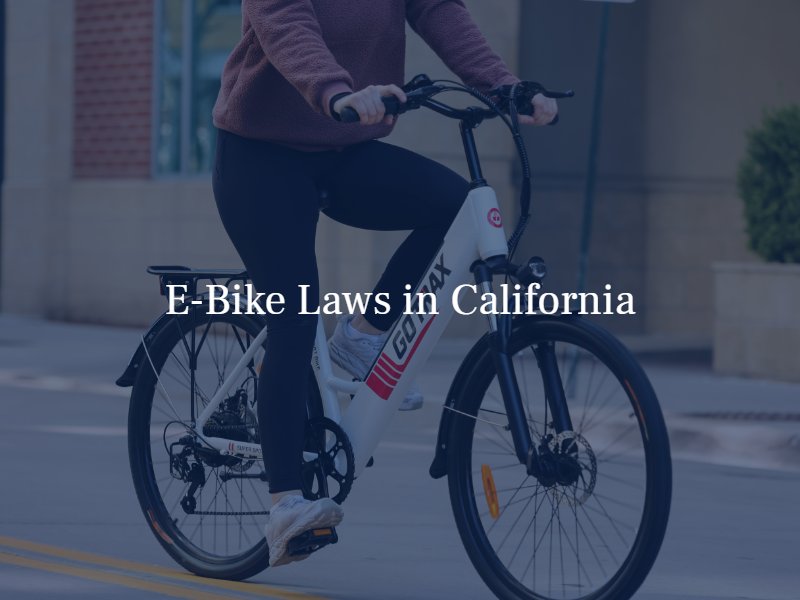In California, bicycle riders under 18 must wear helmets. Adults are not legally required to do so.
Cycling through California’s scenic routes attracts enthusiasts from across the globe, and safety remains a paramount concern, particularly for younger riders. The state’s helmet law emphasizes protective measures for minors, aligning with widespread efforts to reduce head injuries. With bicycle usage on the rise, understanding local regulations becomes crucial for residents and tourists alike.
Compliance with these laws ensures a safer experience for all cyclists and mitigates the risk of traffic-related incidents. This introduction to California’s bicycle helmet mandate is designed to be clear and informative, offering a brief overview for anyone needing to familiarize themselves with the state’s cycling requirements. Remember, safety gear, particularly helmets, is a fundamental aspect of responsible cycling.

Credit: www.attorneyhanson.com
California’s Bicycle Helmet Law
California’s Bicycle Helmet Law plays a crucial role in protecting cyclists. Whether you’re a local or planning a visit, it’s important to be aware of these regulations to stay safe and avoid legal issues. Safety is a top priority, and California takes it seriously, particularly when it concerns bicyclists. Strap in as we delve into the specifics of this essential law.
State Requirements For Cyclists
The Golden State sets clear expectations for bicycle safety. Below are key mandates that cyclists must adhere to:
- Helmets are a must for riders under 18.
- Headgear must meet U.S. Consumer Product Safety Commission (CPSC) standards.
- Always secure the helmet with straps.
- Reflectors are required on bikes at night.
Age Restrictions & Legal Implications
| Age Group | Helmet Requirement | Legal Consequences |
|---|---|---|
| Under 18 years | Mandatory | Possible fines and parental responsibility |
| 18 years and over | Recommended, but not required | No direct legal consequence for non-use |
Note, failing to equip a child cyclist with a helmet can lead to fines. It may also signal negligence in parent-guardian duties. Responsible cyclists always prioritize safety to ensure they comply with law and protect all road users.
Health Benefits Of Helmet Usage
The right gear can make a world of difference on the road, and when it comes to cycling in California, a helmet isn’t just a smart choice—it’s the law for riders under 18. But no matter your age, wearing a helmet offers great health benefits by protecting your most precious asset: your head. Let’s explore just how a helmet can keep you safe.
Injury Prevention And Statistics
Bicycling without a helmet is like driving without a seatbelt. A fall or collision may happen in an instant, but the consequences can last a lifetime. Here’s why helmets are a game-changer:
- Helmets reduce the risk of head injury by 85%.
- Over 70% of fatal bicycle crashes involve a head injury.
- Studies suggest that helmet use saves millions in medical costs each year.
A helmet’s cushioning effect helps absorb the impact, shielding your brain from severe trauma.
Impact Of Helmets On Overall Cyclist Safety
Wearing a helmet is a key factor in cyclist safety. It’s not just about reducing injuries, it’s about boosting confidence and awareness on the road. Here are the facts:
- Helmets act as a protective barrier for your head and brain.
- Cyclists feel more secure, promoting more riding and better health.
- Visible helmets can make cyclists more noticeable to drivers.
By strapping on a helmet before pedaling, you’re actively committing to your safety and the safety of others.
Choosing The Right Helmet
With California’s bicycle helmet laws in place, selecting the right helmet is not just about style. It’s about safety and compliance. A well-chosen helmet can be the difference between a minor mishap and a life-changing injury. Let’s dive into how to pick a helmet that meets safety standards and fits you comfortably.
Safety Standards And Certification
Your helmet must meet stringent safety standards. Look for certifications like CPSC (Consumer Product Safety Commission), ASTM (American Society for Testing and Materials), or CE (Conformité Européenne). These certifications ensure the helmet has undergone rigorous testing and can provide effective protection.
| Certification | Description | Origin |
|---|---|---|
| CPSC | Standard for bike helmet safety in the USA | U.S.A |
| ASTM | Includes standards for multiple sport helmets | International |
| CE | Compliance with EU safety regulations | Europe |
Tips For Proper Fit And Comfort
A proper fit is key to effective protection. Follow these tips to find a helmet that fits snugly and comfortably:
- Measure your head size before you start shopping. Use a soft tape measure to wrap around your head above your eyebrows.
- Look for a helmet with adjustable straps and a dial-fit system. This will let you customize the fit.
- Try on the helmet. It should sit level on your head and not rock side to side. The front should be about an inch above your eyebrows.
- Check the chin strap. When buckled, it should have enough space to fit two fingers between the strap and your chin.
- Pick a lightweight helmet for better comfort, especially on long rides.
- Look for vents. Good ventilation keeps your head cool and improves comfort.
Remember, a helmet that doesn’t fit right won’t protect you effectively. Spend time ensuring the helmet you choose fits well and meets your cycling needs.

Credit: www.dmv.ca.gov
Understanding The Consequences Of Non-compliance
Understanding the Consequences of Non-Compliance with California Bicycle Helmet Law can lead to several unexpected setbacks. Riders under 18 must wear helmets. But, what happens when rules are ignored? Failing to comply can result in penalties. It might also affect your health insurance and legal standing. Let’s delve into the specifics.
Fines And Legal Repercussions
Not wearing a helmet in California can lead to fines. It starts with a simple citation. It may seem small, but these fines can add up. This is especially true if repeated offenses occur. Enforcement varies by city, but the message is clear: wear a helmet or pay the price.
Legal repercussions go beyond fines. If a cyclist without a helmet gets injured, there could be more trouble. Courts may view non-compliance as negligence. This can reduce compensation in accident claims. Below are the standard fines for not wearing a helmet:
| Age Group | First Offense | Subsequent Offenses |
|---|---|---|
| Under 18 | $25 | Up to $200 with fees |
Long-term Impact On Health Insurance And Liability
Ignoring helmet laws can have long-term effects. Health insurers may deny certain claims if you’re hurt while breaking the law. They may argue that the injury could have been prevented. This can lead to significant out-of-pocket expenses for medical care.
Consider the following bullet points regarding insurance and liability:
- Increased Premiums: Insurers may hike up rates if they see you as risk-prone.
- Denied Claims: Coverage for head injuries might be refused if a helmet wasn’t worn.
- Personal Liability: If found negligible, you could be liable for third-party injuries.
Keeping these consequences in mind, compliance with helmet laws is crucial. It protects you financially and legally. More importantly, it safeguards your health.
Advocating For Safer Cycling
Advocating for Safer Cycling in California means not just following the rules but actively enhancing safety measures. The Golden State’s bicycle helmet law aims to protect cyclists, particularly those under 18. Yet, beyond legal mandates, communities and policymakers have pivotal roles to play.
Community Programs And Helmet Giveaways
Local initiatives can make a huge impact on cyclist safety. Many communities across California have taken the challenge head-on with programs that spread awareness and offer practical solutions. One standout strategy is the organization of helmet giveaways. These events provide free helmets to those in need, particularly young riders lacking the resources to procure proper equipment.
- Helmet fitting workshops to ensure proper usage
- Safety education sessions for cyclists of all ages
- Partnerships with schools to reach a wider audience
Policy Changes And Improving Public Awareness
Educational campaigns and policy reforms go hand in hand in making cycling safer. Efforts to update cycling laws and better inform the populace have taken shape in various ways:
- Reworking infrastructure to include bike lanes
- Updating traffic laws to protect cyclists
- Promoting helmet use through Public Service Announcements
This dual approach not only educates but also encourages positive change in cycling culture. As the community embraces these changes, the roads become safer for everyone, cultivating an environment where helmets are a norm and not an exception.
Navigating Legal Changes And Updates
Keeping up with legislative modifications is crucial for cyclists in California. The California Bicycle Helmet Law is no exception. Changes to this law impact riders of all ages. Understanding these updates ensures compliance and safety on the road. Stay informed about recent amendments and future propositions that advocate for cyclist safety.
Recent Amendments To Helmet Laws
California’s bicycle helmet regulations have evolved. Initially, helmets were compulsory for riders under 18. Now, recent amendments reflect a focus on safety across all age groups. Here’s a snapshot of the latest changes:
- All riders under 18 must wear helmets.
- Electric bicycle riders must follow additional rules based on their bike’s classification.
- Helmet standards have been updated to match federal safety guidelines.
These alterations aim to boost protection on the streets. Riders must understand and adhere to the new requirements to avoid penalties.
Future Propositions And Cyclist Advocacy
The cycling community is a strong voice in legislative reform. Proposed changes aim to enhance rider safety. Some anticipated future propositions include:
- Proposals for a mandatory helmet law for all ages: This could extend the requirement to adult riders, emphasizing a universal safety approach.
- Revising fines and penalties: Adjustments are considered to encourage compliance without excessive burden.
- Improving helmet accessibility: Initiatives could focus on making helmets more available and affordable for everyone.
Advocacy groups continue to work closely with lawmakers. They aim to craft laws that protect cyclists while promoting the joys of cycling. Participation in community discussions and staying engaged with local cycling organizations is essential for all bicycle enthusiasts.

Credit: www.walkuplawoffice.com
Frequently Asked Questions Of California Bicycle Helmet Law
Is A Bicycle Helmet Required In California?
Yes, in California, riders under 18 must wear a bicycle helmet on public roads, trails, and paths. Adults are encouraged but not legally required to wear helmets.
What Are The Fines For Not Wearing A Helmet?
Fines for minors not wearing a bicycle helmet can range from $10 to $25. This includes a fee for the initial violation and additional fees for subsequent offenses.
Can Adults Be Fined For Not Wearing A Helmet?
No, adults in California are not fined for not wearing a bicycle helmet, as wearing one is optional for those over 18. However, it is highly recommended for safety.
Are Helmet Laws Different In Each California City?
Helmet laws in California are generally consistent across the state for minors. However, local ordinances can impose additional requirements, so it’s wise to check local regulations.
Conclusion
Wrapping up, biking in California means respecting the helmet laws. It ensures safety and aligns with state regulations. Stay informed and gear up right. Helmets save lives – it’s a simple, proven fact. Hit the road with confidence, knowing you’re riding responsibly in the Golden State.
